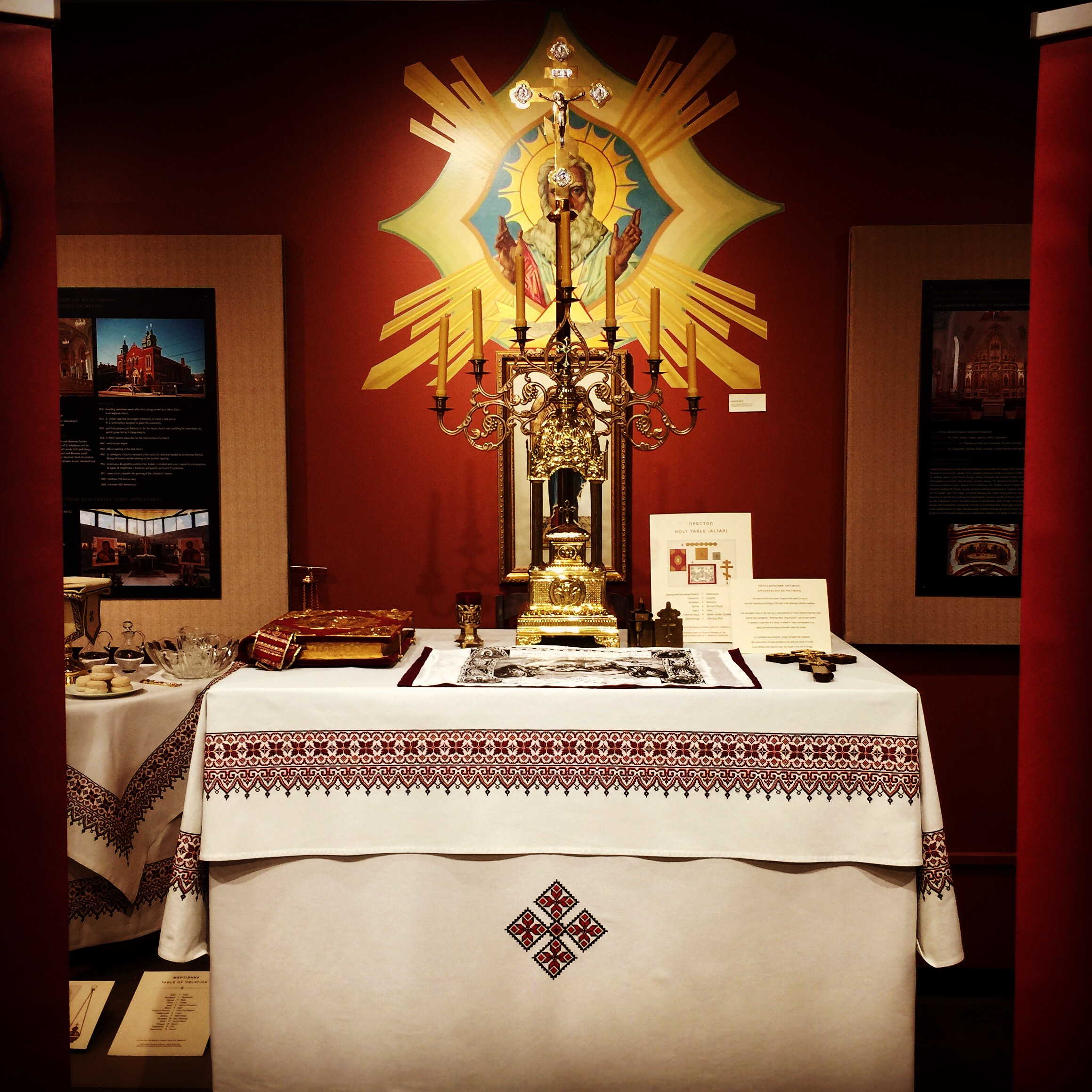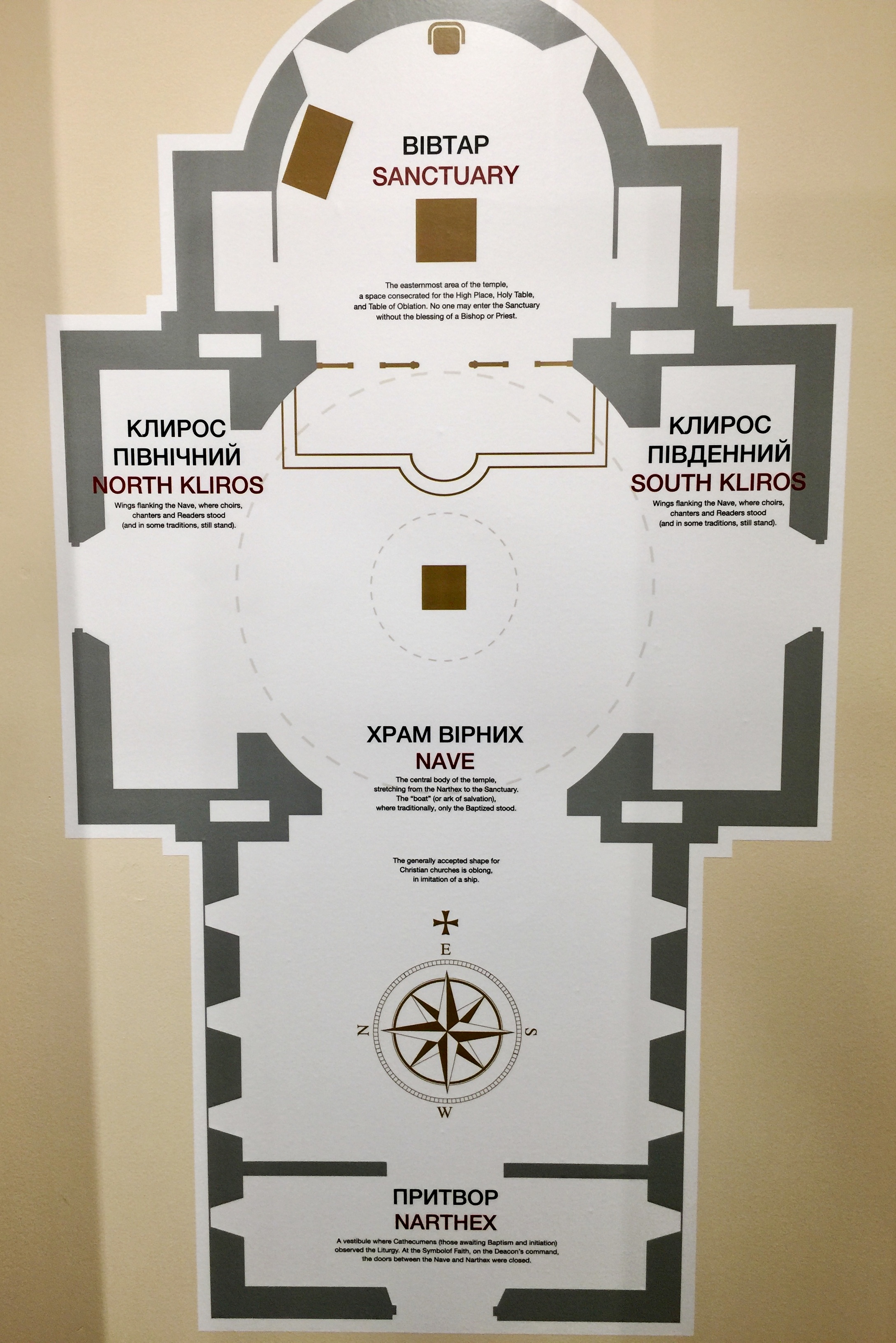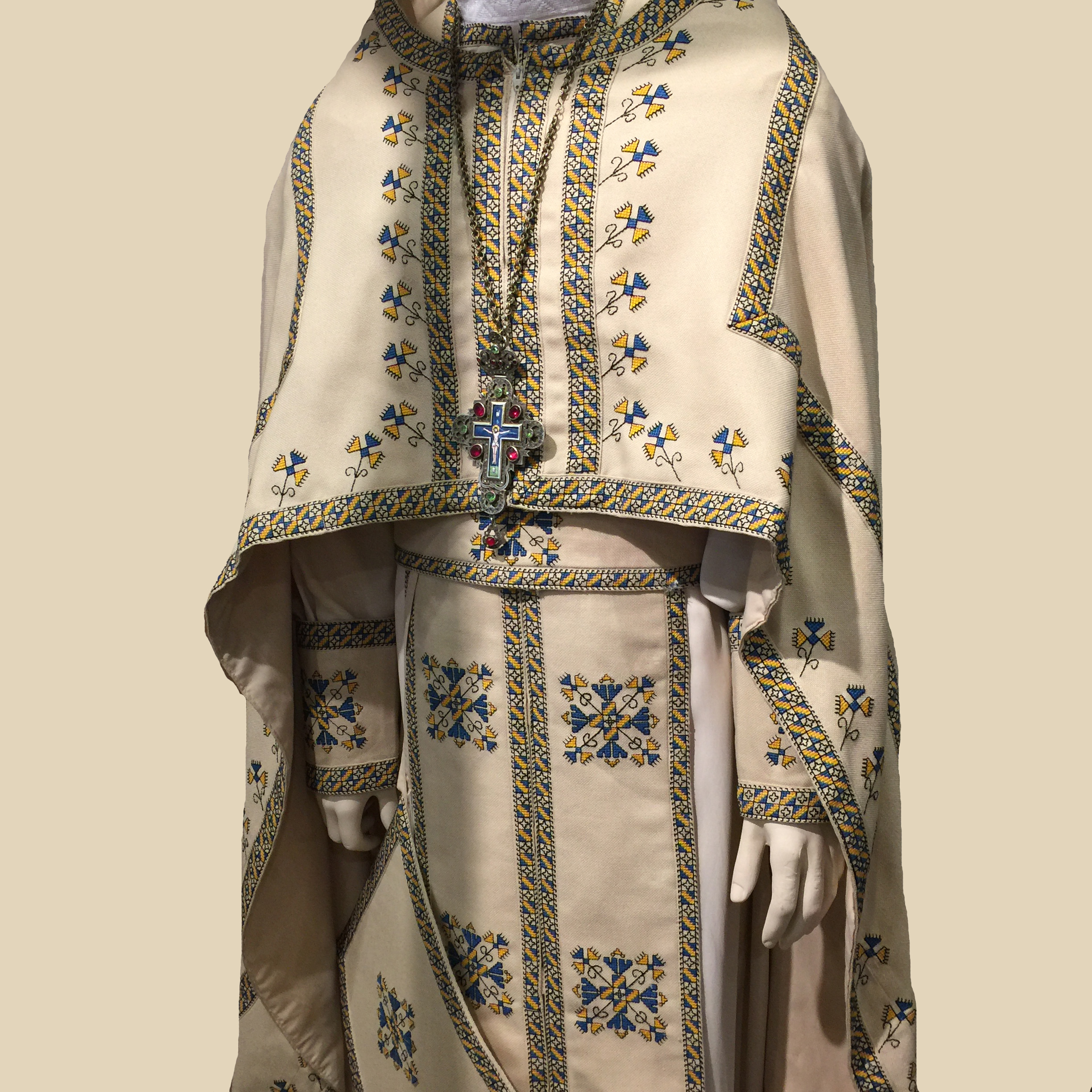Foundations of Faith • Основи Віри
Lord God Sabaoth • Apse icon from St. Volodymyr Ukrainian Orthodox Cathedral (Toronto, Ontario)
Ukrainian Orthodox Churches of the Eastern Eparchy of Canada
Українські Православні церкви Східної Єпархії Канади
December 2018 – August 2019
The Ukrainian Museum of Canada, Ontario Branch celebrated the 100th anniversary of the founding of the Ukrainian Orthodox Church of Canada with an exhibit highlighting the cultural and material heritage of the Eastern Eparchy churches in Ontario and Quebec.
This exhibit featured textiles and embroideries, distinctive architecture, music and iconography, and expanded on the economic and community-building impact the churches made within their geographic areas.
The exhibit was illustrated with photography from the project Ukrainian Churches in Canada by photographer Sterling (Slavco) Demchinsky. A Speaker Series comprised of lectures, debates, iconography, and liturgical musical complemented the exhibit.
Service Table
Тетрапод
The Tetrapod (Service Table) is on the same level as the Nave where parishioners stand or are seated. Sacraments such as holy matrimony, baptism, Chrismation and other services are held before the Tetrapod. Upon it stands a cross, two candles and an icon that corresponds to the feast of the current season.
Altar - Holy Table Престол
The Altar is also called the Holy Table. Upon it are the Tabernacle, the Gospels, the Antimins, the Shroud (Ilyton), the Cross, a seven-candle Candelabrum and the Ciborium (Pyx).
Antimins
Антімінс
The rectangular linen or silk cloth has a representation of Christ’s descent from the Cross and the Four Evangelists - Matthew, Mark, Luke and John - one on each corner. It contains a small relic of a martyr, is folded, wrapped in an Ilyton (shroud) and stays on the altar under the Gospel. It is unfolded only during the Liturgy just before the Anaphora (the consecration of bread and wine as the body and blood of Christ).
Table of Oblation Жертівник
The Table of Oblation stands on the left side of the altar and is where the bread and wine are prepared for communion during the Divine Liturgy.
Tabernacle Дарохранительниця
The Tabernacle sits on the altar and is used as the repository for the Eucharist. This example is originally from the Ukrainian Orthodox Church of St. John in Chatham. When the church closed in 2009, this Tabernacle was placed in the care of the Ukrainian Orthodox Church of the Holy Trinity in London, Ontario.
Liturgical Vestments Богослужбове Облачення
The priest’s vestments include a Dalmatic, which is a long, light-coloured robe with narrow sleeves. Maniples (cuffs) are worn at the wrist. The Epitrachelion (stole), which goes around the neck with the two ends hanging down evenly in front, symbolizes the priest’s consecration and is tied with a Zone (ecclesiastical belt) at the waist. The Chasuble is a long, sleeveless cloak, shortened in front.
Wedding Crowns Вінчальні Корони
Crowns are used in the Orthodox wedding service to symbolize the couple’s relationship to one another as King and Queen of their kingdom: their home.
Icons
Ікони
Icons are two-dimensional, religious works of art. In the Orthodox Church, icons bear witness to the reality of God’s presence.
Candelabrum Канделябр
In the Orthodox tradition lighted candles are highly symbolic and in the church they are presented in a variety of settings and for many liturgical usages. Candles represent the light of Christ. On these candelabrum, during the liturgy, the faithful light candles as an offering to God, to say a prayer for someone or to ask for a blessing. Typically candles are made of natural beeswax. The wax produced by the honeybee is considered the sweetest and purest, therefore the most appropriate for symbolizing the humanity of Christ.












